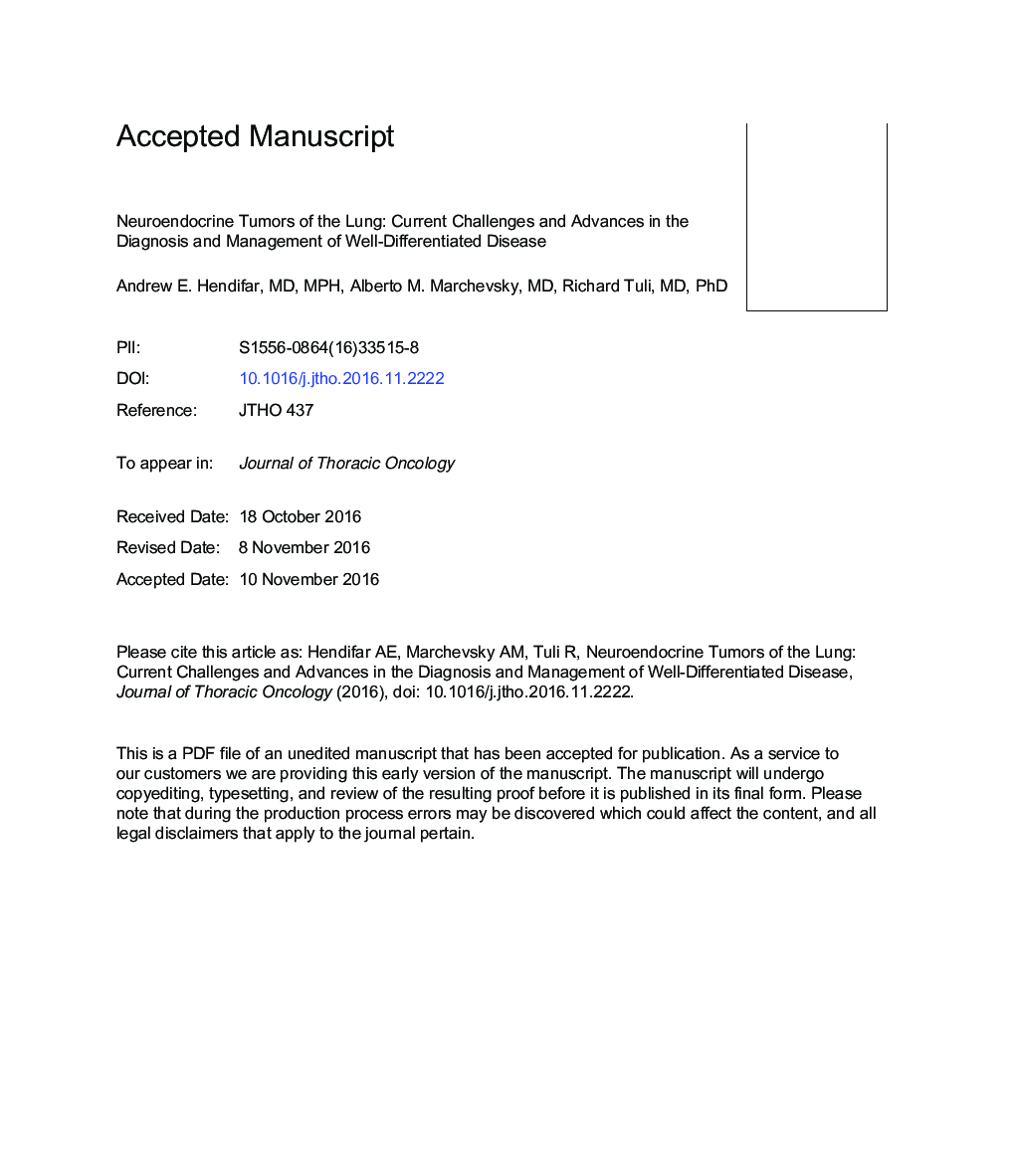| Article ID | Journal | Published Year | Pages | File Type |
|---|---|---|---|---|
| 5701924 | Journal of Thoracic Oncology | 2017 | 39 Pages |
Abstract
Neuroendocrine tumors (NETs) comprise a heterogeneous group of malignancies that arise from neuroendocrine cells throughout the body, most commonly originating from the lungs and gastrointestinal tract. Lung NETs can be classified as well differentiated (low-grade typical carcinoids [TCs] and intermediate-grade atypical carcinoids [ACs]) and poorly differentiated (high-grade large cell neuroendocrine carcinoma or SCLC). The incidence of these tumors is increasing, but disease awareness remains low among thoracic specialists, who are often involved in the diagnosis and early treatment for these patients. An accurate and timely diagnosis can ensure the implementation of appropriate treatment and have a substantial impact on prognosis. However, lung NET classification and diagnosis, particularly for TCs/ACs, are complicated by several factors, including a variable natural history and nonspecific symptoms. Surgery remains the only curative option for TCs/ACs, but there is a lack of consensus between lung NET management guidelines regarding optimal treatment approaches in the unresectable/metastatic setting on account of the limited availability of high-level clinical evidence. As a result, a multidisciplinary approach to management of lung NETs is required to ensure a consistent and optimal level of care. RADIANT-4 is the first phase III trial involving a large subpopulation of patients with advanced well-differentiated lung NETs to report reductions in the risk for disease progression and death with everolimus over placebo. This led to the recent U.S. approval of everolimus-the first agent approved for advanced lung TCs/ACs. To further improve evidence-based care, additional randomized controlled trials in patients with lung carcinoids are needed.
Related Topics
Health Sciences
Medicine and Dentistry
Oncology
Authors
Andrew E. MD, MPH, Alberto M. MD, Richard MD, PhD,
